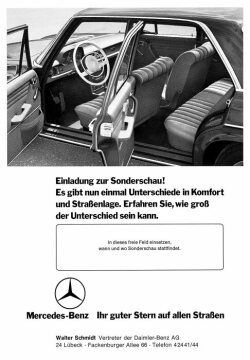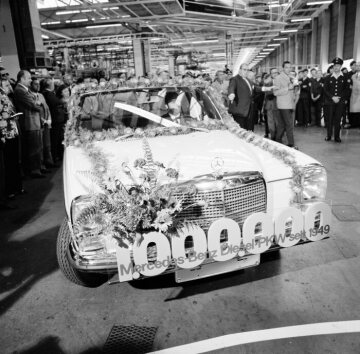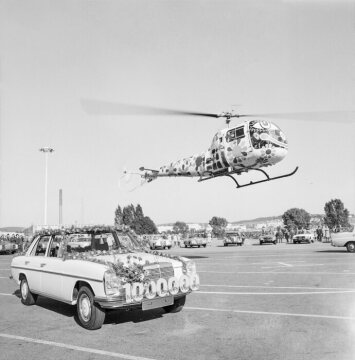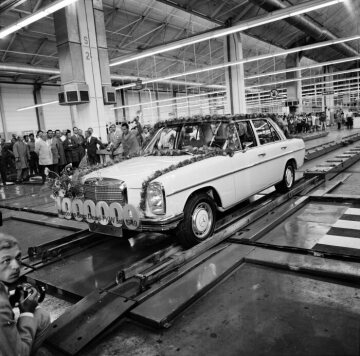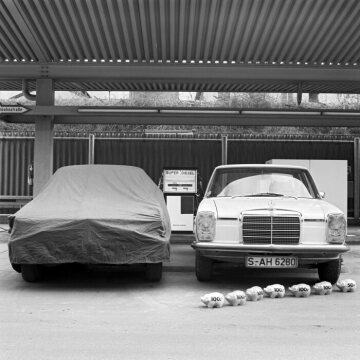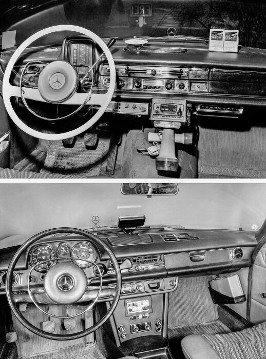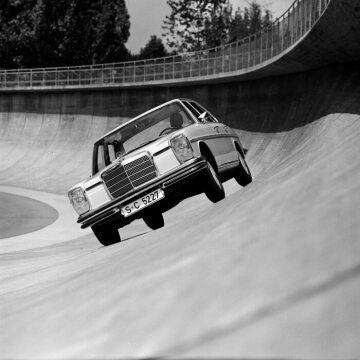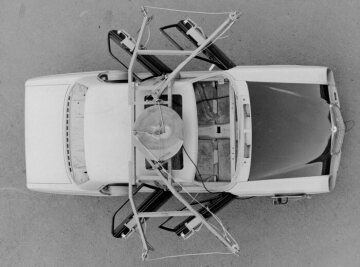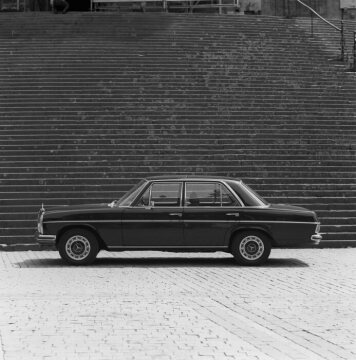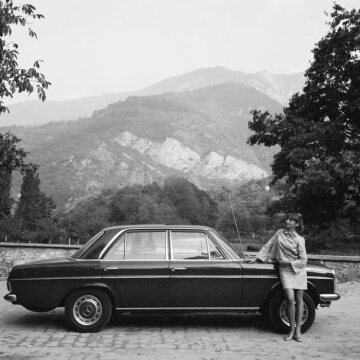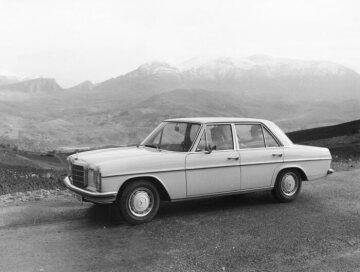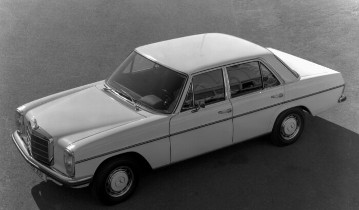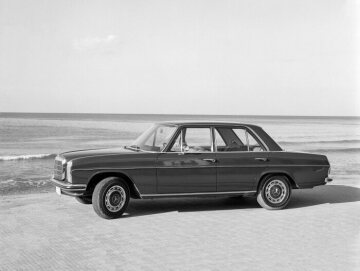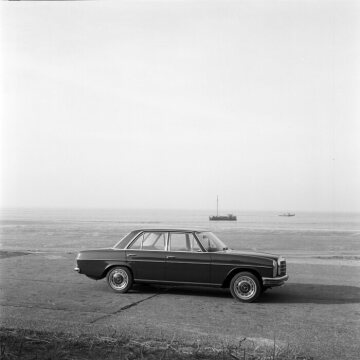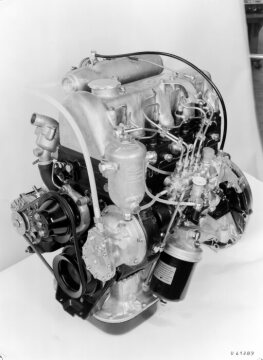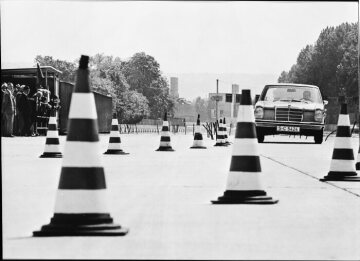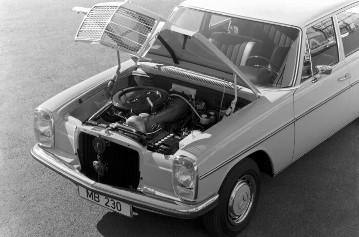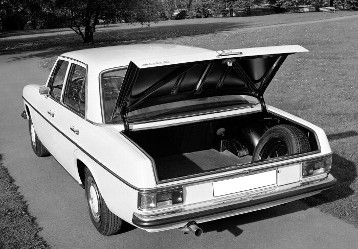Delete
Do you really want to delete the data record?
Download
Please wait a moment ...
Download
Please wait a moment ...
Download
Please wait a moment ...
Crop for shopping cart
Please wait a moment ...
Set as main picture
Do you want to set this media object as main picture?
-
Caption
:
Mercedes-Benz saloon of the 114 series, 1969. Half a tonne load (500 kg) - that's what it says in the car documents. The car pictured carries a little more. The test engineers in Sindelfingen wanted to know how strong the famous safety cell of a Mercedes still was after it had been severely deformed in an accident test - collision at 80-km/h with another vehicle. In practice, the case is quite conceivable that after a collision the car is hurled over an embankment.
-
Info
:
press kit 1971
-
Caption
:
Während in den Taxis älterer Baujahre, Mercedes-Benz der Baureihe W 110 (oberes Foto) Funkgerät, UKW-Empfänger und Taxameter nur in dem gefährdeten Kniebereich angeordnet werden konnten, sind diese für den Taxibetrieb notwendigen Zusatzausrüstungen beim Taxi International praxisgerecht und sicher über dem Getriebetunnel angeordnet. Mercedes-Benz Baureihe W 115 (unteres Foto), 1968.
-
Info
:
Press kit 1973
-
Caption
:
Sicherheitsforschung bei Daimler-Benz, 1973 Scheinwerferreinigung: Verschmutzte Strassen (Schneematsch) können bei Nacht die Leuchtkraft der Frontscheinwerfer bis zu 90% herabsetzen. Das aufgebaute Originalmodell: Mercedes-Benz "Strich-Acht" der Baureihe W 114. Die Scheinwerferreinigungsanlage zeigt die Möglichkeit, aufgeschleuderten Schmutz von den Frontleuchten zu entfernen.
-
Info
:
press kit 1973
-
Caption
:
Mercedes-Benz 250 auf der Einfahrbahn in Untertürkheim, 1968 Die neue Steilwand auf dem Untertürkheimer Versuchsgelände ist in einem Kurvenradius von etwa 60-m untergebracht. Die obere "Leitlinie" der Kurve, die von der Außenkante der Bahn 2,5-m entfernt ist, wurde für eine Freihandgeschwindigkeit von 150-km/h ausgelegt.
-
Info
:
press kit 1969/1970/1973
-
Caption
:
Mit Hilfe der Elasto-Statik, kurz ESEM genannt, wird durch Gliederung eines Objektes in seiner Gesamtheit in kleine, leicht definierbare Grundelemente, die statische und dynamische Festigkeit des Objektes berechnet. Bei Daimler-Benz wird dieses Verfahren dazu angewendet, bessere und preisgünstigere Konstruktionen zu ermöglichen und die Entwicklungszeiten zu verkürzen, 1968.
-
Info
:
press kit 1973
-
Caption
:
Sicherheitsforschung bei Daimler-Benz, 1970 "Strich-Acht"-Limousine der Baureihe 114, 115. 100 000-Mal werden in einem Dauerversuch die Türen jedes neuen Mercedes-Benz-Modells über diesen Mechanismus zugeworfen und wieder geöffnet. In die Praxis übersetzt wären das 5000-Tage, also fast 14-Jahre, an denen die Tür jeweils zwanzigmal geöffnet und wieder geschlossen wird. Die Tür selbst und der Rahmen müssen diese Gewaltbeanspruchung anstandslos aushalten.
-
Info
:
press kit 1973
-
Caption
:
Ein Mercedes-Benz 200 auf der Wedelstrecke des Testgeländes in Untertürkheim. Auf der durch "Hütchen" gekennzeichneten Kurvenstrecke vorbei an den Windmaschinen, die Seitenwinde bis zu 100-km/ h erzeugen, wedelt ein Modell 200, um den Beweis seiner phantastischen Straßenlage zu erbringen.
-
Info
:
Additional picture number: 68206-93 press kit 1969

Loading






